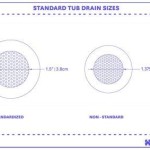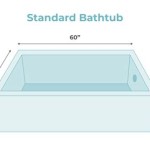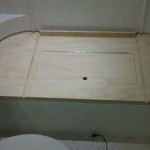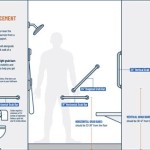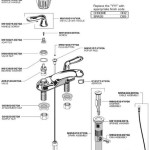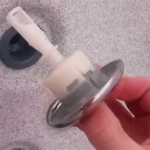Bathtub Drain Seal Leaking: Causes, Identification, and Solutions
A leaking bathtub drain seal is a common plumbing problem that can lead to significant water damage if left unaddressed. The seal, typically composed of rubber or putty, is designed to prevent water from escaping around the drain assembly where it connects to the tub. When this seal fails, water can seep into the surrounding areas, potentially damaging floors, walls, and ceilings. Understanding the causes, identifying the symptoms, and knowing the appropriate repair techniques are crucial for preventing extensive and costly repairs.
The function of a bathtub drain seal is critical to the overall integrity of the plumbing system. It forms a watertight barrier, preventing water from flowing where it shouldn't. This seal is positioned between the drain flange (the visible part of the drain inside the tub) and the tub itself, as well as between the drain body and the drain pipe below the tub. Over time, factors such as age, material degradation, and improper installation can compromise the effectiveness of this seal, resulting in leaks.
The consequences of a leaking bathtub drain seal can extend beyond surface-level water damage. Water can penetrate into the subfloor, leading to mold growth and structural damage. Mold can pose serious health risks, especially to individuals with respiratory problems. Structural damage can weaken the floor joists and surrounding framing, potentially leading to costly repairs involving demolition and reconstruction.
Identifying a Leaking Bathtub Drain Seal
The initial identification of a leaking bathtub drain seal can sometimes be challenging, as the leak may not be immediately obvious. Often, the first sign is evidence of water damage in areas adjacent to the bathtub. This could manifest as water stains on the ceiling below the bathroom, dampness or discoloration on walls near the tub, or visible mold growth. It's important to investigate these signs promptly to determine the source of the leak.
A more direct method of identifying a leak involves a simple test. First, ensure the drain is closed. Then, fill the bathtub with a few inches of water. Observe the area around the drain, both inside the tub and underneath (if accessible), for any signs of water seeping through the seal or dripping from the drain assembly. It's helpful to use a flashlight to get a better view of the drain pipe and connections below the tub.
Another diagnostic step is to check the drainpipe connections and the overflow drain (if present) for leaks. While the primary focus might be on the drain seal itself, leaks can sometimes originate from other points in the drain system. Ensure all connections are tight and free from corrosion or damage. If the overflow drain is leaking, it will need to be addressed separately to eliminate that possible source.
If the drain in question features a pop-up drain stopper mechanism, inspecting the linkage and stopper is relevant as well. Sometimes, the stopper can fail to seal properly, causing water to slowly drain down the pipe and potentially exacerbating a pre-existing small leak from the drain seal. Ensuring the stopper is clean and functioning as designed is a part of holistic troubleshooting.
In situations where access to the underside of the tub is restricted, such as in slab-on-grade construction, detecting a leak can be more difficult. In these instances, monitoring the flooring around the tub for signs of moisture and staining becomes even more crucial. Regular checks of the bathroom for any abnormal odors, such as a musty smell indicating mold, can also provide clues about a hidden leak.
Common Causes of Bathtub Drain Seal Failure
Several factors contribute to the deterioration and eventual failure of a bathtub drain seal. Understanding these causes can help in prevention and selecting appropriate replacement materials during repair.
One of the most prevalent causes is age and material degradation. Over time, the rubber or putty used in drain seals can dry out, harden, and crack. This loss of flexibility and integrity compromises the seal's ability to effectively prevent water from passing through. This process is accelerated by exposure to chemicals found in common cleaning products and bath additives. Hot water exposure also plays a role, as continuous heating and cooling cycles can weaken the material over time.
Improper installation is another significant contributor to premature drain seal failure. If the drain assembly was not properly tightened during installation, or if insufficient sealant was applied, the seal may not form a complete and watertight barrier from the outset. Over-tightening can also be detrimental, potentially damaging the seal material and leading to leaks. Poor alignment between the drain flange and the tub surface is another installation-related problem that can compromise the seal's effectiveness.
Movement of the bathtub can also weaken the drain seal. Tubs can shift slightly due to settling of the foundation or changes in temperature and humidity. This movement can put stress on the drain connections, causing the seal to break or loosen. This is more likely to occur in older homes with less stable foundations. Reinforcing the tub's support structure can help minimize this type of stress and prolong the life of the drain seal.
Chemical exposure from drain cleaners should also be considered. Many commercially available drain cleaners contain harsh chemicals that can corrode or degrade rubber and other seal materials. Frequent use of these products can significantly shorten the lifespan of the drain seal. If drain cleaning is necessary, using enzymatic cleaners or physical methods like drain snakes is preferable to chemical solutions.
Finally, changes in water pressure can contribute to drain seal problems, albeit less directly. If water pressure in the plumbing system fluctuates drastically, it could place undue stress on seals and connections throughout the system, including the bathtub drain seal. Regular monitoring of water pressure and the installation of a pressure regulator can help mitigate this issue.
Repairing a Leaking Bathtub Drain Seal
Repairing a leaking bathtub drain seal typically involves replacing the old seal with a new one. The process can vary slightly depending on the type of drain assembly and the accessibility of the drainpipe, but the general steps remain the same.
The first step is to gather the necessary tools and materials. This includes a new drain seal (make sure to select the correct type and size for the drain assembly), a wrench or pliers suitable for loosening drain connections, a screwdriver, putty knife or scraper for removing old sealant, and appropriate cleaning supplies. It is also crucial to have a bucket and towels on hand to catch any water that may be trapped in the drainpipe.
Next, turn off the water supply to the bathtub to prevent accidental flooding. Then, remove the drain stopper and any associated linkage. Loosen the drain flange nut from underneath the tub, using the wrench or pliers. It may be necessary to use penetrating oil to loosen stubborn nuts that have become corroded. Once the nut is loose, carefully remove the drain flange from the top of the tub. It is essential to support the drainpipe from below while loosening the connections to prevent it from pulling away from other plumbing connections.
After removing the drain flange, clean the area around the drain opening on the tub thoroughly. Use the putty knife or scraper to remove any old sealant or debris. Apply a new bead of plumber's putty or silicone sealant around the drain opening on the tub. Position the new drain flange on top of the sealant and gently press it into place. From underneath the tub, reattach the drainpipe and tighten the drain flange nut securely. However, avoid over-tightening, as this could damage the new seal.
Once the drain assembly is reassembled, test the seal for leaks. Plug the drain and fill the bathtub with a few inches of water. Observe the area around the drain, both inside the tub and underneath, for any signs of water seepage. If leaks are detected, tighten the drain flange nut further or re-apply the sealant, ensuring a complete and watertight seal. If the leak persists, it might be necessary to disassemble the drain assembly and inspect it for any damage or defects, replacing any faulty components as needed.
Finally, reinstall the drain stopper and any associated linkage. Turn the water supply back on and check the operation of the drain stopper to ensure it seals properly. If any adjustments are needed, follow the manufacturer's instructions for the drain stopper mechanism. Regularly inspect the drain seal for leaks in the future, particularly after periods of heavy use, to prevent further water damage.

Bathtub Drain Leak Repair Leaking How To Fix

Bathtub Drain Leak Concrete Home Improvement Stack Exchange

Plumbing Bathtub Drain Leakage Recurring Failures Home Improvement Stack Exchange

How To Replace Bathtub Drain Shoe Gasket

6 Steps To Eliminate Bathtub Drain Leaking

How To Replace A Bathtub Drain And Fix Leak

I Found The Leak How To Repair A Bathtub Overflow Drain

5 Reasons Your Bathtub Is Leaking And How To Fix It Fast

4 Common Bathtub Problems And Simple Solutions 1 Tom Plumber

How To Replace Bathtub Drain Stopper With A Lift And Turn Diy
Related Posts

